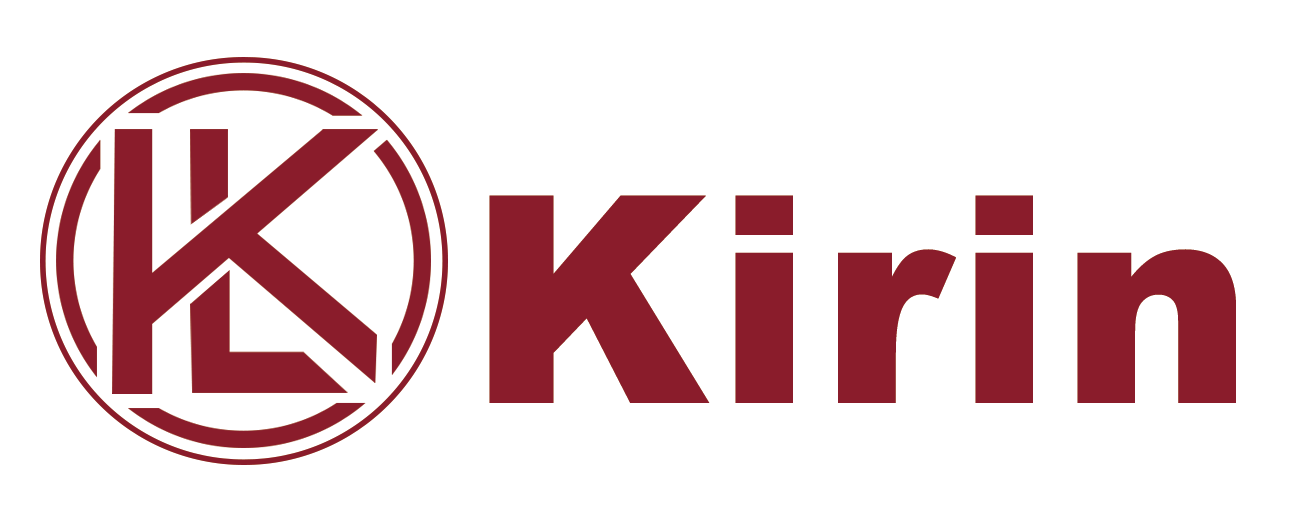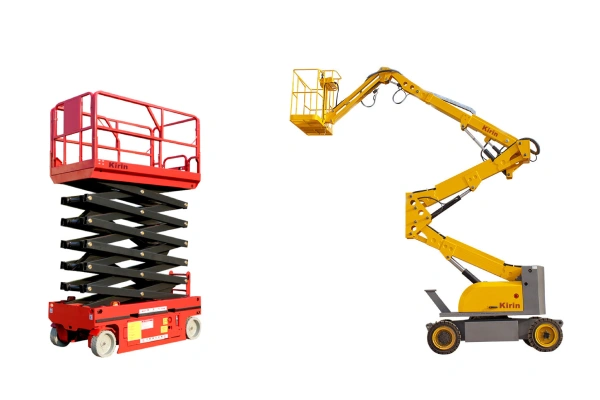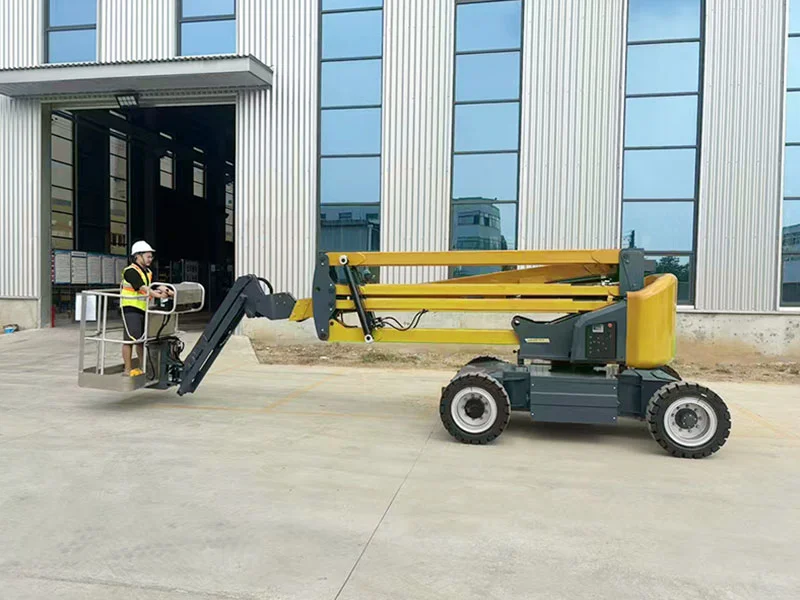
When it comes to working at heights, the terminology can sometimes be a bit confusing. Two terms often used interchangeably, yet with distinct differences, are “manlift” and “boom lifts.” While both fall under the umbrella of aerial work platforms (AWPs), understanding their specific characteristics and applications is crucial for safety and efficiency on any project. This post will clarify the differences, helping you choose the right equipment for your needs.
Understanding Manlifts (Personnel Lifts)
The term “manlift” (often used interchangeably with “personnel lift” or “vertical mast lift”) generally refers to a type of aerial work platform primarily designed to lift one or two workers straight up to a working height. Think of them as compact, portable vertical lifts. They typically have a smaller footprint, making them ideal for indoor use, tight spaces, and tasks that require direct vertical access.
Common types of manlifts include:
- Vertical Mast Lifts: These are the most common type of manlift, offering direct vertical elevation. They are often battery-powered and have non-marking tires, making them suitable for finished floors.
- Push-Around Manlifts: As the name suggests, these are manually pushed into position before being elevated.
- Self-Propelled Manlifts: These offer greater mobility as they can be driven while lowered, and sometimes even while elevated, though stability is paramount.
The primary purpose of a manlift is to safely elevate personnel and their tools to perform tasks like maintenance, stock picking, or ceiling work. They prioritize vertical reach and maneuverability in confined areas.
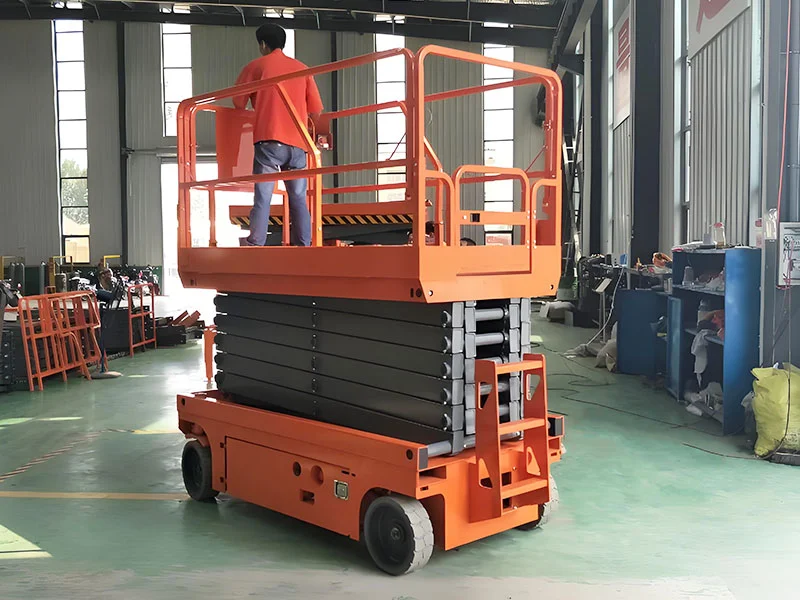
Understanding Boom Lifts (Articulating and Telescopic Booms)
A boom lift, on the other hand, is a much more versatile and robust piece of equipment, characterized by its extendable “boom” arm that allows for horizontal outreach in addition to vertical elevation. This makes boom lifts ideal for tasks requiring access over obstacles or across a wider work area. The term “boom lift” is a broad category that includes two main types:
- Articulating Boom Lifts (Knuckle Booms): These feature multiple “knuckles” or pivot points along the boom arm, allowing them to articulate up and over obstacles. Imagine reaching over a building or around machinery – an articulating boom man lift is perfect for this. They offer excellent maneuverability in complex environments.
- Telescopic Boom Lifts (Straight Booms or Stick Booms): These have a straight boom arm that extends telescopically, providing the greatest horizontal reach and often higher vertical reach compared to articulating booms. If you need to reach a high point directly above a clear path, a telescopic lift boom is often the best choice.
Both types of boom lifts are commonly used in construction, industrial maintenance, tree trimming, and outdoor applications where significant reach and the ability to clear obstacles are required. When you hear “manlift boom lift,” it often refers to a boom lift specifically designed for personnel, which is essentially what all boom lifts are, as they lift men (and women!).
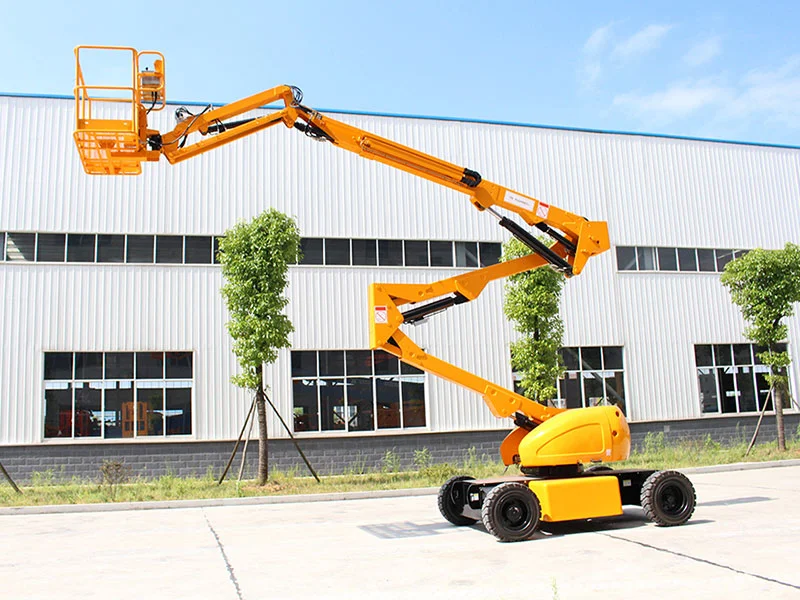
Side-by-Side Comparison: Boom Lift vs Manlift
Let’s break down the key differences between a manlift boom lift and a typical manlift:
| Feature | Manlift (Personnel Lift) | Boom Lift (Articulating/Telescopic) |
| Primary Movement | Primarily vertical elevation | Vertical elevation and significant horizontal outreach |
| Reach | Limited vertical; minimal horizontal | Extensive vertical and horizontal reach |
| Footprint | Generally smaller, more compact | Larger, more substantial |
| Maneuverability | Excellent in tight indoor spaces | Excellent for reaching over/around obstacles |
| Power Source | Often electric/battery; some hydraulic | Diesel, electric, hybrid |
| Typical Usage | Indoor maintenance, stock picking, tight spaces | Construction, industrial, outdoor, challenging access |
| Common Terms | Personnel lift, vertical mast lift, push-around lift | Articulating boom, telescopic boom, boom man lift |
How to Choose the Right Lift for Your Project
Choosing between a boom lift vs manlift depends entirely on the specific requirements of your project:
- Nature of the Work: Is your task directly above the access point, or do you need to reach over or around obstacles? If it’s the latter, a boom lift is essential. If it’s straight up, a manlift might suffice.
- Working Height and Outreach: Precisely measure the maximum height and horizontal outreach required. This will immediately narrow down your options. Remember, a boom man lift will give you far greater flexibility in reach.
- Work Environment: Indoor or outdoor? Confined space or open area? Floor type (finished or rough terrain)? Manlifts excel indoors, while many boom lifts are designed for rugged outdoor conditions.
- Power Source: Do you need an electric lift for indoor, emission-free operation, or a powerful diesel boom lift for outdoor work?
- Budget: Rental costs for boom lifts are typically higher than for manlifts due to their greater complexity and capabilities.
For any project requiring elevated access, carefully assessing these factors will ensure you select the most appropriate and cost-effective aerial work platform.
Conclusion
While both manlifts and boom lifts are invaluable tools for working at height, they serve different primary purposes. A manlift offers efficient vertical access in compact spaces, while a boom lift provides unparalleled reach and versatility, allowing workers to navigate over and around obstacles. Understanding this fundamental distinction is key to enhancing safety and productivity on your job site. When you need to get a “man up” safely and efficiently, consider whether a direct vertical lift or a powerful, articulating man boom lift is the right solution.
FAQs
Q: Can a manlift be used outdoors?
A: Some heavy-duty vertical mast manlifts are designed for outdoor use, but generally, boom lifts are better suited for outdoor, uneven terrain due to their robust construction and larger tires.
Q: Are all boom lifts considered manlifts?
A: Yes, in a practical sense, all boom lifts are designed to lift “men” (personnel) to perform work, so the term “boom man lift” is often used to emphasize their primary function.
Q: What is the main safety difference between a boom lift and a manlift?
A: Both require strict adherence to safety protocols, including fall protection. Boom lifts, with their greater reach and articulation, require more awareness of potential tip-over hazards and proper outrigger deployment (if applicable). Manlifts have a smaller base and are less prone to tip-over if used on level ground.
Q: How high can a boom lift go?
A: The reach of a boom lift varies significantly. Some telescopic boom lifts can reach over 185 feet vertically and provide substantial horizontal outreach.
Q: What is an aerial work platform (AWP)?
A: Aerial Work Platform (AWP) is a general term that encompasses all types of elevating work platforms, including manlifts, boom lifts, scissor lifts, and other equipment designed to lift workers to elevated positions.
